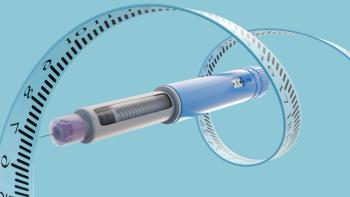
7 New FDA Approvals Pharmacy Techs Should Know
Learn about the new products and expanded indications approved by the FDA in September 2016.
Learn about the new products and expanded indications approved by the FDA in September 2016.
1.)
The FDA expanded the indication of Amgen’s blinatumomab (Blincyto) on September 1, 2016.
Blincyto, a bispecific CD19-directed CD3 T-cell engager antibody construct administered as a continuous intravenous infusion, was
Adverse events associated with the administration or use of Blincyto include serious infections, tumor lysis syndrome, neutropenia and febrile neutropenia, impaired driving ability, elevated liver enzymes, pancreatitis, and leukoencephalopathy. Potentially life-threatening or fatal cytokine release syndrome and neurological toxicities have been reported in some patients treated with the drug.
Additionally, patients should not be immunized with live virus vaccines for at least 2 weeks prior to the start of treatment, during treatment, or until immune recovery following the last cycle of Blincyto.
2.)
The FDA approved Shire’s immune globulin subcutaneous (human) 20% solution (Cuvitru) on September 14, 2016.
Cuvitru is indicated for primary immunodeficiency in patients 2 years and older. The drug is the only 20% subcutaneous immunolglobulin (IG) treatment option without proline and with the ability to infuse up to 60 mL (12 g) per site and 60 mL per hour per site as tolerated; this allows for fewer infusion sites and shorter infusion durations compared with other conventional subcutaneous IG treatments.
The most common adverse effects reported by trail participants treated with Cuvitru include headache, nausea, fatigue, diarrhea, and vomiting. Other adverse events associated with the drug’s use include renal dysfunction/failure, aseptic meningitis syndrome, transfusion-related acute lung injury, transmittable infectious agents, and interference with laboratory tests. Like other IG products, Cuvitru also carries a Boxed Warning for an increased risk of thrombosis.
3.)
The FDA approved Novartis’s etanercept-szzs (Erelzi), a biosimilar to Amgen’s etanercept (Enbrel), on August 31, 2016.
- Moderate to severe rheumatoid arthritis, either as a standalone therapy or in combination with methotrexate (MTX);
- Moderate to severe polyarticular juvenile idiopathic arthritis in patients 2 years and older;
- Active psoriatic arthritis, including use in combination with MTX, in psoriatic arthritis patients who do not respond adequately to MTX alone;
- Active ankylosing spondylitis; and
- Chronic moderate to severe plaque psoriasis in adult patients who are candidates for systemic therapy or phototherapy.
The most common adverse events reported by trial participants treated with Erelzi include infections and injection site reactions, while other serious adverse effects associated with the drug’s use include congestive heart failure, neurologic events, and hematologic events. Erelzi should not be administered to patients with sepsis.
Erelzi also carries a Boxed Warning alerting patients and providers to an increased risk of serious infections such as tuberculosis and invasive fungal infections, as well as to an associated risk of lymphoma and other potentially fatal malignancies in children and adolescent patients treated with tumor necrosis factor blockers. The drug must be dispensed with a Medication Guide that describes important information about its uses and risks.
4.)
The FDA approved Janssen’s extended-release canagliflozin and metformin hydrochloride (Invokamet XR) on September 21, 2016.
Invokamet XR is indicated as an adjunct to diet and exercise for the treatment of type 2 diabetes in adults. Patients who are prescribed Invokamet XR should take 2 tablets once per day with the morning meal.
The immediate-release version of the drug initially received the FDA’s nod in August 2014 as an adjunct to diet and exercise to improve glycemic control in adults with type 2 diabetes who are not adequately controlled with metformin or canagliflozin, or who are already being treated with both medications separately. In May 2016, this label was expanded to include adults with type 2 diabetes who are not already being treated with canagliflozin or metformin and may benefit from dual therapy.
Adverse events associated with the use of Invokamet XR include dehydration, ketoacidosis, kidney problems, hyperkalemia, serious urinary tract infections, and hypoglycemia. The drug also carries a Boxed Warning for lactic acidosis, a rare but serious complication that can occur due to metformin accumulation, and should not be used in patients with kidney problems or those who are on dialysis.
5.)
The FDA approved Bayer’s levonorgestrel-releasing intrauterine system (Kyleena) on September 19, 2016.
Kyleena, a small, flexible, plastic T-shaped intrauterine device (IUD), works by slowing releasing levonorgestrel into a woman’s uterus and allowing the hormone to enter the blood. The IUD can prevent pregnancy for up to 5 years after being placed by a health care provider, but it can be removed at any time.
The following safety information is included in the Kyleena label:
- Kyleena should not be used by women with a pelvic infection, those who get infections easily, or those who have certain cancers.
- Less than 1% of Kyleena users contract a serious pelvic infection called pelvic inflammatory disease.
- Kyleena users should contact their prescriber and use an alternate form of birth control if the device becomes dislodged.
- Although pregnancy while using Kyleena is rare, it can potentially be life threatening and may result in loss of pregnancy or fertility.
- The use of Kyleena may result in ovarian cysts, which will typically disappear on their own.
- Bleeding and spotting may increase for 3 to 6 months after the device is inserted, and remain irregular thereafter.
- Periods usually become shorter and lighter after the device is inserted, and may stop entirely.
Bayer plans to launch Kyleena in October 2016.
6.)
The FDA expanded the label of Lundbeck and Otsuka’s brexpiprazole (Rexulti) on September 26, 2016.
Rexulti was
The most common adverse event associated with the use of Rexulti in MDD patients include akathisia and weight gain, while trial participants with schizophrenia who were treated with the drug reported weight gain and somnolence.
7.)
The FDA approved Aralez Pharmaceuticals’ aspirin and omeprazole (Yosprala) on September 15, 2016.
Yosprala is indicated for the secondary prevention of cardiovascular and cerebrovascular events in patients who require aspirin, as well as those at risk of developing aspirin-associated gastric ulcers.
Although the drug contains 40 mg of immediate-release omeprazole and either 81 mg or 325 mg of delayed-release, enteric-coated aspirin, the FDA noted that it is not interchangeable with these 2 individual components.
The most common adverse effects associated with the use of Yosprala include indigestion, heartburn, nausea, stomach-area pain, diarrhea, growths in the stomach, and chest pain. Patients and health care professionals should also be aware of an increased risk of kidney and liver problems, low magnesium and vitamin B12 levels, bone fractures, and Clostridium difficile related diarrhea.
Aralez plans to launch Yosprala in October 2016.
Newsletter
Stay informed on drug updates, treatment guidelines, and pharmacy practice trends—subscribe to Pharmacy Times for weekly clinical insights.

















































































































































































































